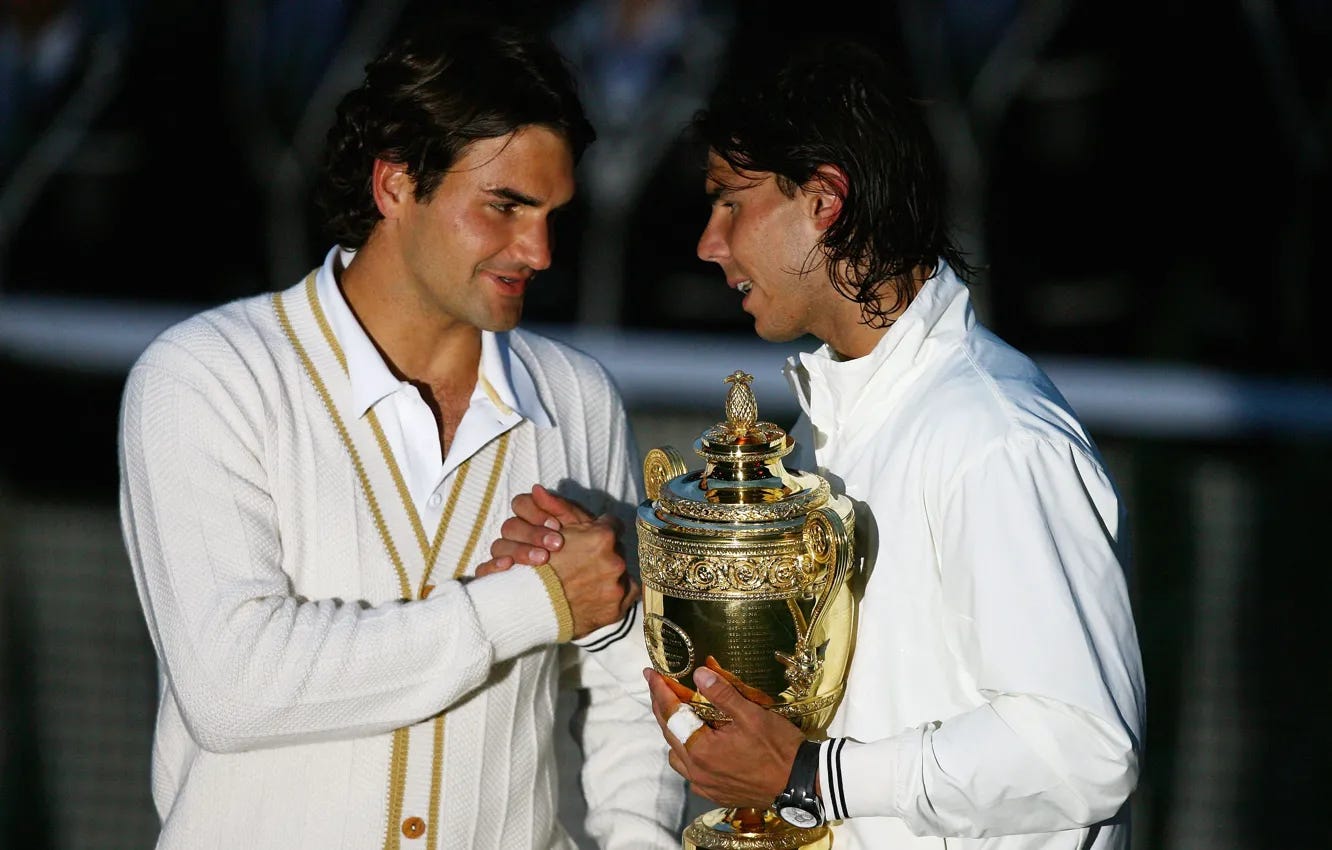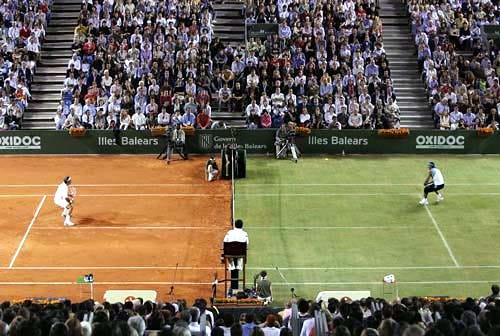Remembering the Big Bang
19 years on from Federer versus Nadal in Rome
We make fun of it, because there is no greater sin in our culture than that of earnestness, but sport really is about narrative. The ball may be round or oval, bound in leather or felt, kicked or thrown, but at the end of the day, what really matters is how it helps us make sense of the world. Who is up and who is down? What are the ramifications for the future? What does it all mean?
It is just as well that quality is a largely secondary consideration, because much of even elite sport is tedious, low-stakes mush. There are, of course, still matches of extraordinary quality and import, but they tend to be immiscible. Like oil and water, they do not mix. No wonder we like to construct little universes around them (the podcasts, the phone-ins, the gossip columns) that are often only tangential to the sport itself.
But then, every so often, we are served up a reminder of why we watch. Exactly 19 years ago this week1, Roger Federer and Rafael Nadal played out perhaps the greatest, and certainly the most consequential match of the 40 they contested against each other. On 14 May 2006, the world numbers one and two served up a five-set, five hour and five minutes classic at the Foro Italico in Rome. Of course, Nadal won. He always won. But more importantly, in the words of the writer Steve Tignor, we witnessed the “Big Bang of our current tennis universe”.
Even if the match were not held in the Italian capital, it would still be a tired cliché to suggest it had a gladiatorial feel. But the crumbling Campo Centrale stadium was so intimate that the stands left little space for the court itself. Consequently, neither player had much room behind the baseline to retreat and retrieve. Instead, they took turns taking rips at the ball.
This was not, of course, their most celebrated match. That occurred two years later, on the Centre Court of Wimbledon, when Nadal fell to the ground amidst the gloom and flash of bulbs, in another five-set finish. But that match, though high on drama and with a grand slam trophy on the line, was both lower on quality and, ultimately, import.
Far from being career-defining, Federer went on to win the next major in New York three months later. From a narrative perspective, it is therefore deeply unsatisfying. Bjorn Borg at least had the decency to lose to John McEnroe in 1981 and then virtually disappear for several decades.
Rome was different. Federer came into the match with a losing head-to-head record against Nadal, and having never beaten the Spaniard on clay. But he was getting closer. A month prior, the Swiss had won a set off Nadal on the dirt of Monte-Carlo. Which may not sound like much, but recall that Nadal was in the middle of an 81-match winning streak on the surface.
None of this was especially gratifying for Federer, who dominated the sport on all other surfaces, and was in truth not keen on a rivalry. The Swiss revelled in his unipolar moment, which evaporated only slightly faster than that enjoyed by the United States following the collapse of the Soviet Union. Nadal was first an irritation, then a menace and finally an obsession for Federer.
I do not intend to dwell on the mechanics. How Nadal’s vicious left-handed topspin forehand would career into Federer’s one-handed backhand, forcing the Swiss to play above his shoulder, denuding any response of pace. I have done enough conscious breathing to know that rehashing old war wounds serves nobody.
All I will say is that Federer played as well as he ever would against Nadal on clay, producing the type of attacking tennis the experts demanded, finding repeated success at the net, taking the opening set tie-breaker 7-0, leading 4-1 in the fifth set and holding two match points. And still losing.
In the press conference afterwards, Federer sighed: “He caught me right on the finish line.” Until this match, it really did appear as if Federer would eventually figure out the key to defeating Nadal on clay. This was not an unfounded assumption. The Swiss had losing records against many other rivals earlier in his career (Andre Agassi, Lleyton Hewitt) before going on to dominate them.
In the months and years that followed, the idea that Federer would ever turn the tables on Nadal, at least on clay, seemed as remote as ever. He would go on to lose the final of that year’s French Open to Nadal, and the one after, and the one after, and then for good measure three years after that. A decade later, Federer would eventually solve the Nadal riddle, but by then the stakes were lower, the fire dimmer.
Rome was the moment when the rivalry still felt unscripted, still carried the mantle of possibility. Its greatness lay in the illusion that Federer might win. In the end, that is what sport gives us: not answers, but the stories we tell ourselves while chasing them.
20 years ago or at least 19 years ago today would have made for a cleaner hook, but as Donald Rumsfeld almost said, you go to pixel with the newsletter idea you have, not the idea “you might want or wish to have at a later time”





Thanks for the reality check.